Where Art Meets You
Cincinnati Art Museum, Ancient Middle Eastern Art Gallery Renovation
←
To Project Types
Cincinnati, OH | 4,500 SF
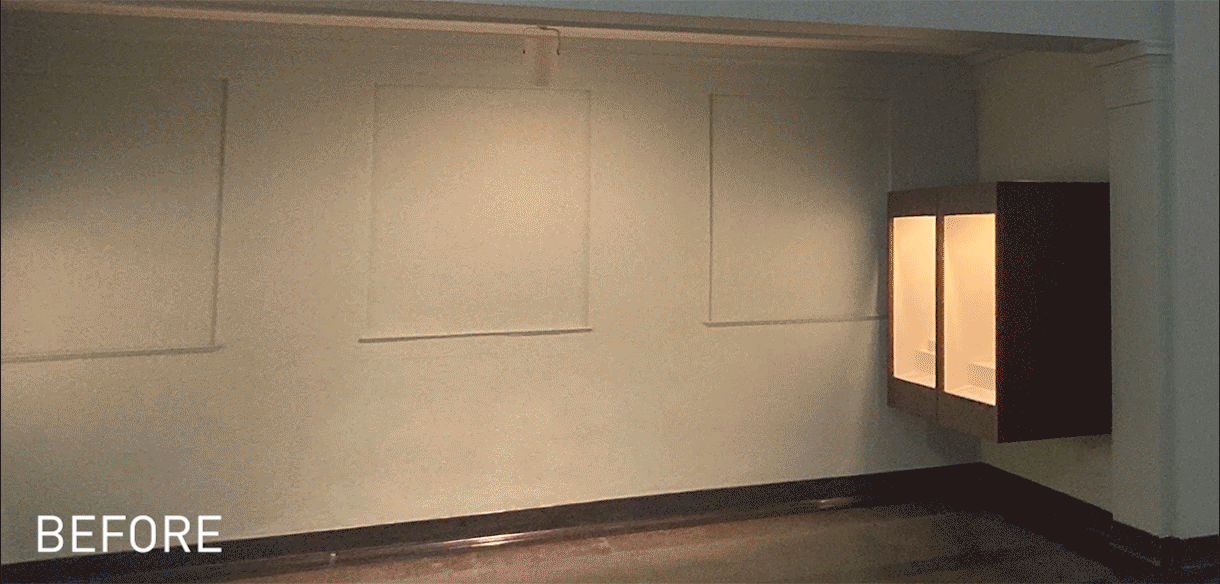 Existing windows, covered over time, once again fill the gallery with natural light.
Existing windows, covered over time, once again fill the gallery with natural light.
The Cincinnati Art Museum (CAM) is home to the most significant collection of Nabatean material in the United States, its artifacts tucked into a well-positioned gallery adjacent to the main entrance. A new renovation provides the museum with an elegant, light-filled home for this renowned collection, while making the space more accessible and memorable to visitors. The transformation improves the gallery’s connection to the museum’s tranquil courtyard and provides an inviting gateway to explore neighboring galleries, helping to advance CAM’s vision of connecting people and art.
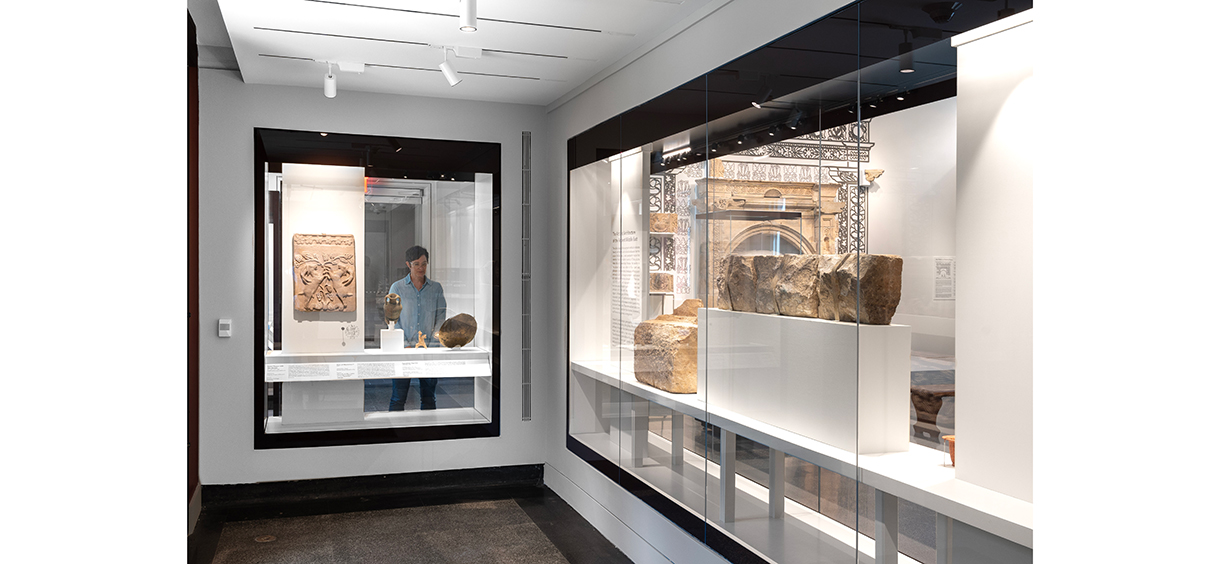 Anchored by a large limestone shrine from the Nabatean temple at Khirbet Et-Tannur, gallery displays allow visitors to feel immersed in the collection.
Anchored by a large limestone shrine from the Nabatean temple at Khirbet Et-Tannur, gallery displays allow visitors to feel immersed in the collection.
Despite its location near the museum’s entrance, the gallery for Ancient Middle Eastern Art was under-trafficked, in part because its presence was obscured by a grand stair at the perimeter of the lobby. By reclaiming under-utilized space beneath the stairs, we established a new forecourt to draw visitors towards the gallery, giving them much needed space to gather while improving access to the art beyond.
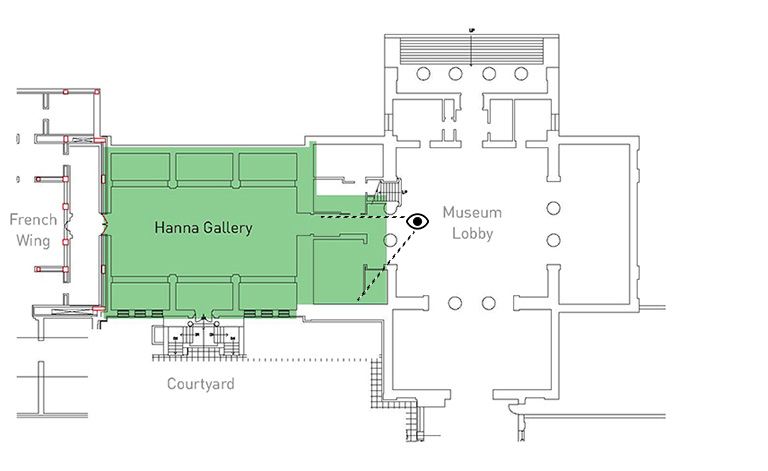 The gallery's location, just off the lobby, presented an opportunity to invite curiosity.
The gallery's location, just off the lobby, presented an opportunity to invite curiosity.
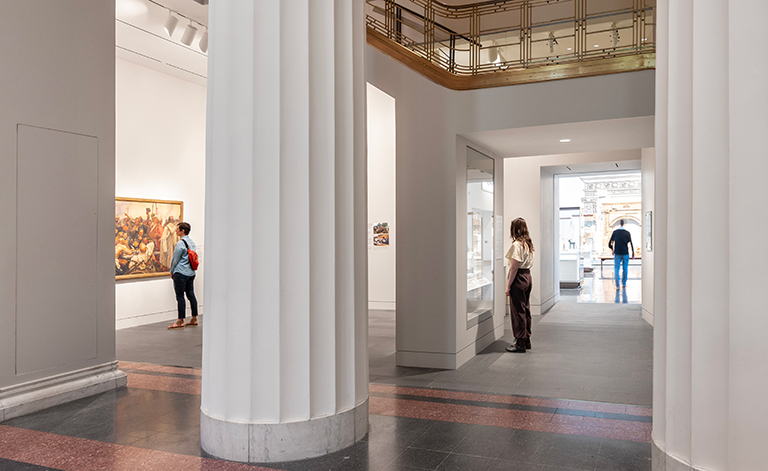 A new forecourt encourages visitors to explore.
A new forecourt encourages visitors to explore.
Within the Ancient Middle East gallery, measures were taken to restore the grace and clarity of the original 1930’s design, while complementing the richness and complexity of the ancient worlds on display. The room is anchored by a key artifact from the collection—a large limestone shrine (see header image at the top of this page) from the Nabatean temple at Khirbet Et-Tannur— on the gallery’s far wall, around which guests are routed to encourage exploration of adjoining rooms.
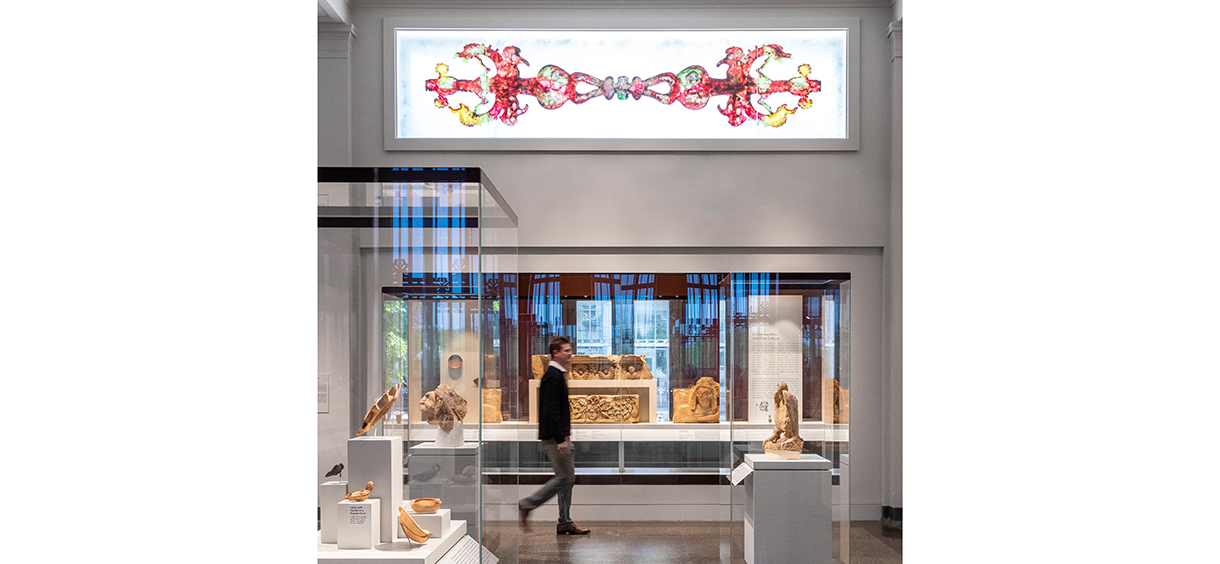 Ancient artifacts are complemented by a striking new clerestory art commission by Pakistani-American artist Shahzia Sikander.
Ancient artifacts are complemented by a striking new clerestory art commission by Pakistani-American artist Shahzia Sikander.
Existing window openings, covered over time, were re-opened, bringing in abundant natural light and allowing visitors outside the museum a glimpse of the world within. Clerestory windows have become an additional focal point in the gallery thanks to a commissioned painted glass artwork by Shahzia Sikander, titled Caesura, inviting new connections between the past and the present.
The renovation demonstrates CAM’s continued commitment to showcasing the art, innovation, and culture of the ancient civilizations represented by its permanent collection. Its vision—for art to meet a person at every step—has taken another step forward.
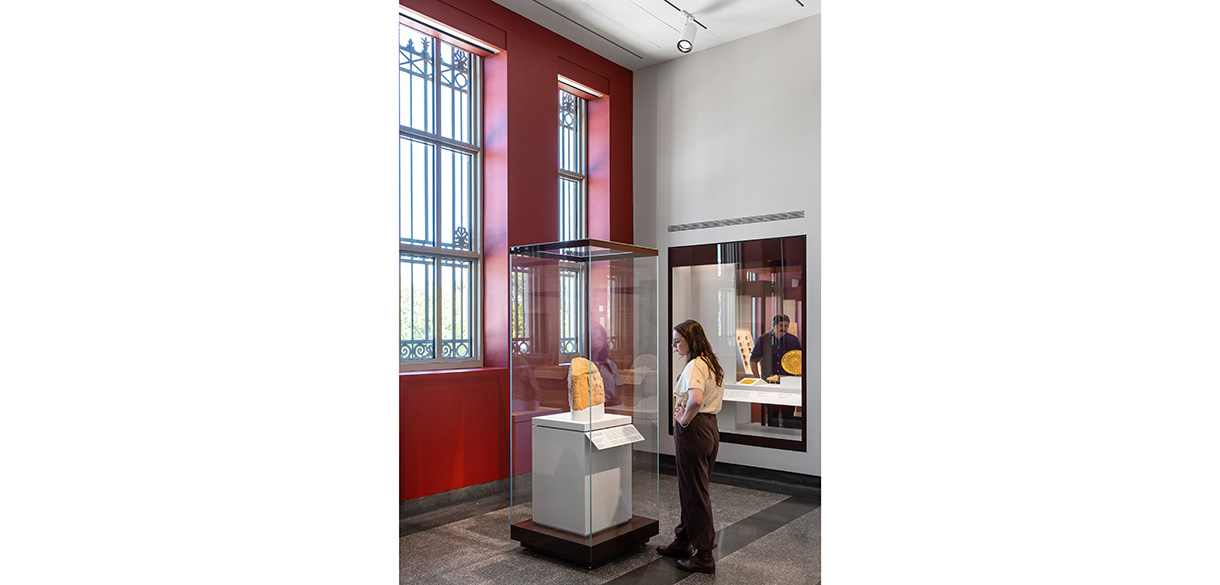 Natural light and interior transparency invite people to linger and learn.
Natural light and interior transparency invite people to linger and learn.



